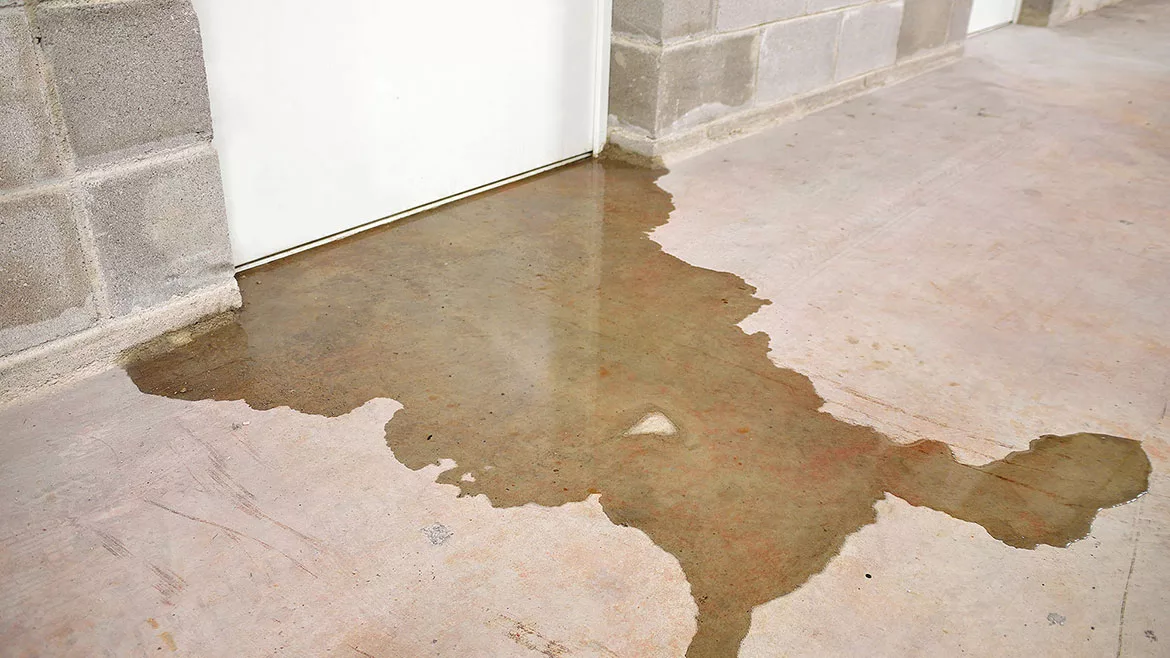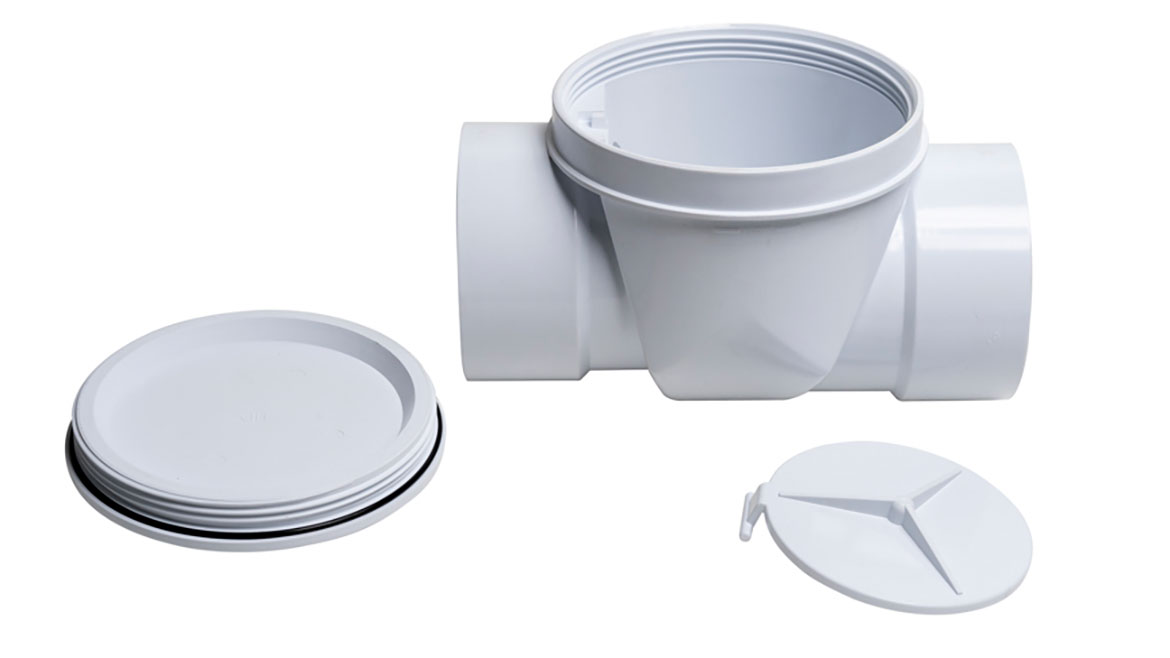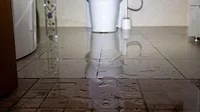The plumber’s guide to backwater valves
Defending against sewage backup.

Backwater valves play a vital role in preventing the reverse flow of water by effectively sealing off the drainage system. Photos courtesy of Oatey Co.
As plumbers, you understand the crucial role that backwater valves play in maintaining the integrity of plumbing systems. Sewage backup can wreak havoc on properties, leading to costly repairs and potential health risks. However, with the right solutions, you can provide your clients with reliable protection against this unfortunate scenario.
One key solution is a backwater valve — a specialized device that allows wastewater to flow in one direction while preventing it from flowing back upstream. It acts as a strong line of defense, ensuring that wastewater moves only in the intended direction.
Backwater valves play a vital role in preventing the reverse flow of water by effectively sealing off the drainage system.
Solving the flow reversal problem
One of the primary purposes of installing backwater valves is to tackle the issue of flow reversal. This problem can arise during heavy rainfall or when sewer lines are overloaded, causing a surge in water pressure. Backwater valves also provide protection during a power outage, when sump pumps may not be operational, or when there is a blockage in the sewer system.
In sum, a backwater valve is a barrier against reverse flow, ensuring the integrity of the plumbing system and minimizing water damage to properties. Backflow can occur in various areas, but some regions may be more prone to such incidents. Factors contributing to the prevalence of backflow include aging infrastructure, high groundwater levels, hydraulic conditions and proximity to contaminating sources.
The specific prevalence of backflow incidents can vary from incident to incident and depend on local conditions and infrastructure.
Backwater valves are designed as sewage check valves to prevent reverse flow. Its elastomeric seal inside the flapper ensures a tight seal, preventing fluid from entering. Its application is to protect low areas or basements from backflow or waste from street sewers. By ensuring that sewage backup is avoided, this proactive measure lowers the risk of property damage and safeguards the health of individuals occupying the premises.

Never install a backwater valve vertically. The valve’s flapper, which prevents backflow, must be able to close properly. A vertical installation would always keep the flapper in an open position, rendering the valve ineffective against backflows.
Installing a backwater valve
Installing a backwater valve can be straightforward if you follow the proper steps.
Before installing, consider using a camera with a locator to find the best spot for the valve. This will help you determine the optimal position and route of the pipe. Generally, the backwater valve should be installed as close to the potential entry point of backflow as possible. This typically means installing it on the main sewer line before it enters the building.
Once you have identified the location, you will need to excavate the area to access the pipe. Whether in a basement or front yard, careful excavation is required to expose the pipe.
After exposing the pipe, measure and mark the section where the backwater valve will be installed. Make a clean and straight cut using a hacksaw or reciprocating saw. Remember to always chamfer and debur the pipe ends.
Next, apply primer to the outside of the pipe and the inside of the valve’s hub or coupling. Follow this by applying cement to both surfaces, ensuring a thorough and even application. Connect the backwater valve by sliding the hub or coupling onto the cut end of the pipe.
For an easier installation, consider using mechanical bands or couplings instead of sliding a coupling with cement over the pipe.
Ensure all connections are secure and leak-free. If the valve has an access cover, align and attach it securely. To test its functionality, run water from within the home or dwelling and observe the flapper to ensure water is flowing freely through the valve.
It is important to adhere to local plumbing codes and regulations throughout the installation. Additionally, exercise caution when cutting through pipes, especially if they are concrete.
Last but not least, consult the manufacturer’s specific installation instructions and seek guidance from an experienced plumber for any specific installations or concerns.
Additionally, never install a backwater valve vertically. The valve’s flapper, which prevents backflow, must be able to close properly. A vertical installation would always keep the flapper in an open position, rendering the valve ineffective against backflows.
Maintenance tips to share with your customers
Incorporating and maintaining backwater valves in a home’s plumbing system is crucial to safeguarding against potential flooding and water backup. To ensure the effective functioning of these valves, advise your customers to adhere to the following best practices:
- Usage during heavy rainstorms: It is crucial for home and building owners to monitor their drains closely during heavy rainstorms if they have a backwater valve installed. Be vigilant for signs indicating the valve has not closed, such as water backing up from the lowest drain or gurgling sounds from the drains. When this happens, water is not prevented from passing through, leading to possible backups in the home’s lowest level.
- Sewer cleaning and maintenance: Running a sewer cleaning cable (snake) through a backwater valve is not advisable. This action could damage the valve’s flapper, possibly leading to a permanent malfunction if the cable causes the flapper to close on it. Instead, install cleanout tees on either side of the backwater valve, facilitating easy and safe access for maintenance.
- Routine maintenance checks: Regular maintenance is pivotal for the backwater valve to function correctly. Inspecting the valve after every heavy rainstorm and checking for any debris that might prevent the flapper from closing properly is advisable. Additionally, even without rainstorms, a quarterly inspection of the flapper for debris or obstructions is recommended. This ensures that the valve remains in optimal working condition, ready to protect your customer’s home or business from flooding at any time.
Following proper installation and maintenance practices for backwater valves is crucial to ensure effective backflow prevention. Adhering to these guidelines can provide clients with reliable protection against water backup and potential plumbing system damage.
Your expertise and attention to detail in installing and maintaining backwater valves are vital in safeguarding homes from potential flooding.
Looking for a reprint of this article?
From high-res PDFs to custom plaques, order your copy today!









